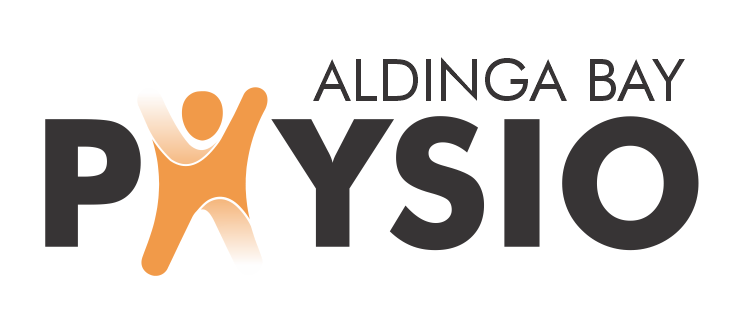Physiotherapy in Aldinga
Aldinga Bay Physio provides professional physiotherapy in Aldinga, helping people manage pain, recover from injury and improve movement. Each appointment is one-on-one with physiotherapist Anthony Sherdian, BSc Physio, MAPA, who listens, explains and builds a plan that fits your goals and lifestyle. From back pain and sciatica to sports injuries, work-related pain, motor vehicle accidents and general wear and tear, as your local Aldinga physio, we are here to help you on your road to recovery.
Our physiotherapy services
We help people from Aldinga, Aldinga Beach, Port Willunga, Sellicks Beach, Willunga, McLaren Vale and other nearby suburbs with a wide range of musculoskeletal, postural and movement problems. Every plan starts with a thorough assessment to understand what’s causing your symptoms and what you want to achieve.
Explore our physiotherapy services and find out how treatment can support your recovery and long-term health.
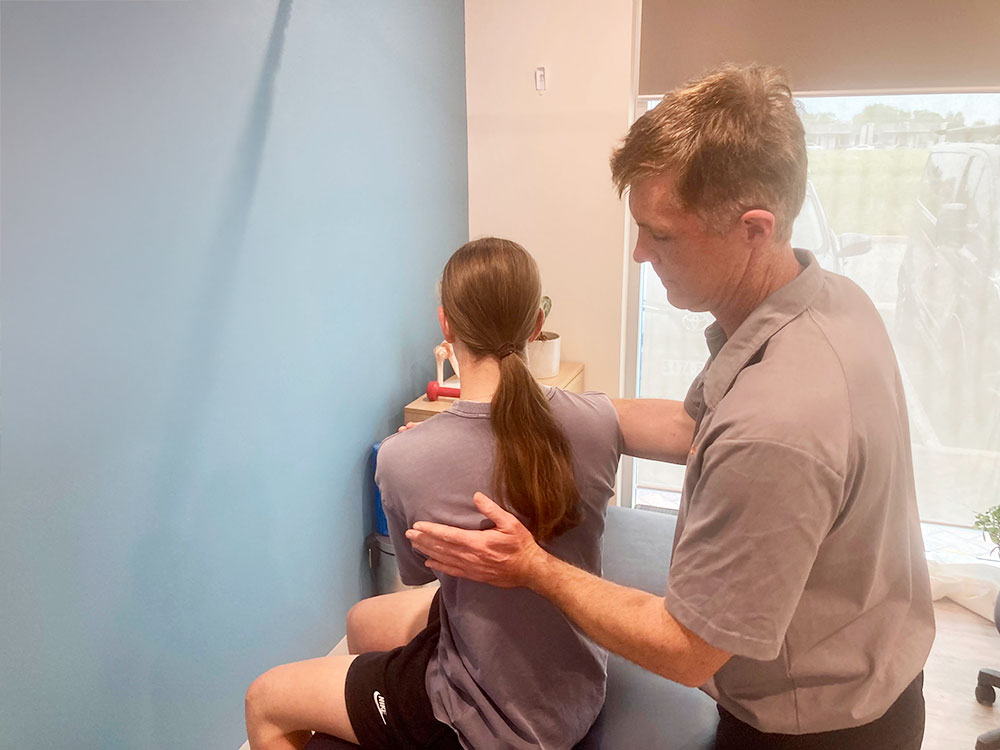
Physio services provided at a glance
Back Pain
Sciatica
Neck Pain
Sports Injuries
Headaches and migraine
Hip and Knee Arthritis
Tendonitis / tendinopathies
Shoulder pain / injury
Post-op rehab
Kids and the younger athlete
NDIS
Dry needling
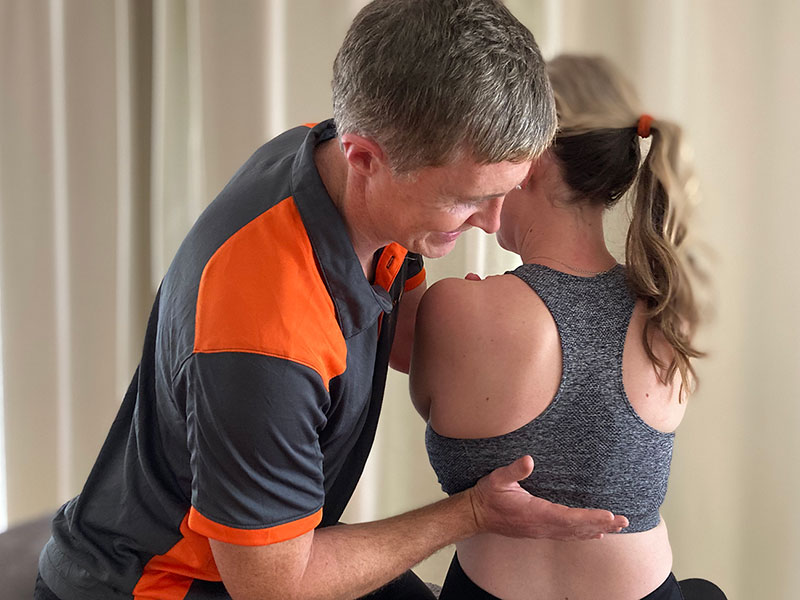


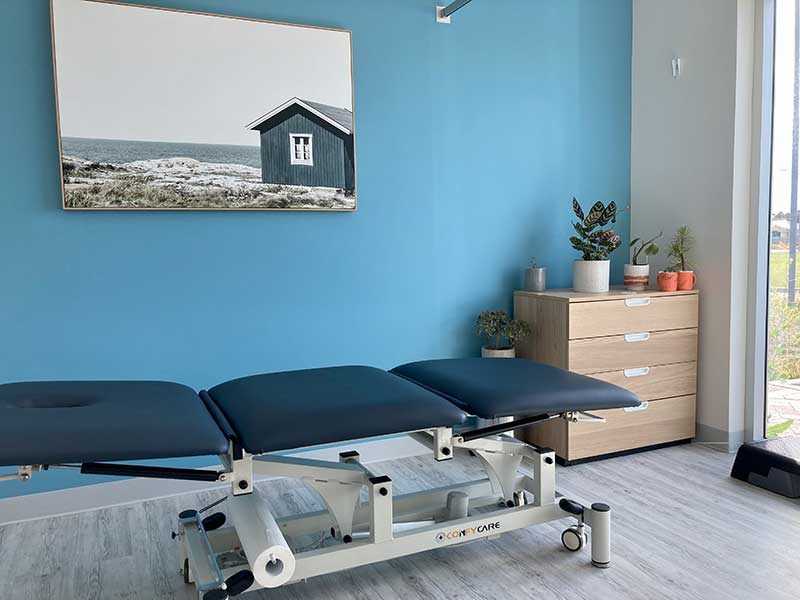
Physio for Back Pain
Why people in Aldinga seek help for back pain
Back pain can be caused by a number of things. It can come on suddenly or gradually over weeks, months or years. This is because there are many different types of tissue and tissue injuries that can cause or collectively contribute to lower back pain or middle back pain. These include; thoracic or lumbar discs, facet joints, SIJ (sacroiliac joint), costovertebral joints, ligament sprains, back muscles strains, back muscle spasm, nerve impingement, nerve strain, bone stress or fracture of the vertebrae, among others. At Aldinga Bay Physio, I figure out what is going on in two ways. I listen to how you describe your pain or symptoms and usually some questions from me to fill any gaps. Informed by this I will then do a relevant physical assessment, usually involving some movement tests and palpation (feeling the various tissues).
People from Aldinga and Willunga often seek help for neck pain related to desk work, posture or stress.
Treatment options for back pain - Read more
The combination of both these will help me to identify if we need to work on getting some acute back pain (new, often, sharp) relief and/or getting to the source of any long term (chronic) back pain. Depending on the cause of the back pain, some of the treatments I may use at Aldinga Bay Physio include; joint mobilisation, different types of massage, taping, dry needling, stretching and different exercises specific to your back pain for prevention/limitation of your symtoms in the future.
Make an appointment for back pain treatment from a physio in Aldinga, Sellicks, Willunga and Mclaren Vale.
Physio for Sciatica
Why people in Aldinga seek help for sciatica
Sciatica is a type of pain caused by irritation of the sciatic nerve and is often in the back of the thigh or calf. Although it is the better known nerve in the lower limb, there are several other nerves and reasons that can cause a similar pain/tingle/burning/numbness/weakness in the thigh or calf. Some of the reasons include; one or more of the nerves of the lumbar (lower) spine being pinched (eg. by disc or bone) or bathing in inflammation on its course. Sometimes one of the nerves of the lower leg (eg. sciatic, femoral, sural, tibial, peroneal) can be strained locally. Other times the actual injury is in the lower back but the pain just refers down the leg called radicular pain. When there is reduced strength or altered sensation or reflexes in the lower limb this may be due to altered nerve conduction or what is called a radiculopathy.
People from Aldinga Beach and nearby suburbs often come for sciatica symptoms such as shooting leg pain or nerve irritation
Treatment options for sciatica - Read more
When assessing these symptoms I will look at your lower back and see how it is moving. I may do tests that look at how different nerves like or dislike being stretched or moved. I will likely check your reflexes and may check your lower body sensation or strength.
Depending on what is likely to be causing the radicular or radiculopathy symptoms, I may perform gentle manual therapy or gapping techniques to your lower back, soft tissue work to the lower limb, neural stretches or sliders, dry needling, activation exercises or postural advice. If you need imaging or I think you need to see your GP in regard to additional medication, I will let you know.
Make an appointment for sciatica treatment from a physio in Aldinga, Sellicks, Willunga and Mclaren Vale.
Physio for Neck Pain
Why people in Aldinga seek help for neck pain
There are several causes of neck pain. These include; wry neck, whiplash, postural related neck pain, neck pain due to shoulder weakness, discogenic neck pain, facet joint neck pain, myofascial neck pain. Similar to lower back pain, neck pain can be associated with radiculopathy or radicular pain, in this case into the upper limb (shoulder, arm, hand). Some of these different types of neck pain can feel similar and be in similar locations. However, the best treatment and prevention of reoccurrence will depend on an accurate diagnosis. At Aldinga Bay Physio I will work on getting an accurate diagnosis so that you get the quickest neck pain relief with the best long term outcomes.
Residents of Aldinga and Willunga often experience neck pain linked to computer work or tension.
Make an appointment for neck pain treatment from a physio in Aldinga, Sellicks, Willunga and Mclaren Vale.
Physio for Sports Injuries
Why people in Aldinga seek help for sports injuries
I know how much people miss performing to their best or not being able to do the sport they love. Whether you are a weekend warrior, high level athlete or just need that run to clear your head, I should be able to help. I will always consider your biomechanics, especially if your sporting injury has come on gradually, reoccurs or you have multiple injuries. With traumatic injuries, I will work towards getting your movement and strength back to as normal as possible and often better than pre-injury where possible.
Athletes and active people from Aldinga, Aldinga Beach, Willunga and McLaren Vale often visit for sprains, strains and overuse injuries from training or competition.
Treatment options for sports injuries - Read more
- hamstring strain, calf strain, quad strain and adductor strains
- shoulder dislocations
- acromioclavicular strains
- shoulder labral tears
- knee meniscal irritations/tears
- ankle ligament sprains
- shin splints
- medial tibial stress syndrome
- peroneal tendon dysfunction
- femoacetabular impingement and other hip related disorders
- acute tendinonsis and chronic tendinopathy of the achilles tendon, patella tendon, hamstring origin tendon, adductor tendon, rotator cuff tendons
- stress fracture of the metatarsals and vertebrae
- tennis elbow
- golfers elbow
- Heavy knocks where everything hurts!
- fractures of upper and lower limbs
- ankle impingement
Make an appointment for sports injuries treatment from a physio in Aldinga, Sellicks, Willunga and Mclaren Vale.
Physio for Hip and Knee Arthritis
Why people in Aldinga seek help for hip and knee arthritis
Osteoarthritis (OA) is a wear and tear type arthritis. It typically occurs more in our joints as we age. A lot of people will start to show signs of OA in their hips and knees as early as their 20s. Their hip or knee arthritis may not bother them until their 40s, 50s or 60s. Some people will benefit from a hip replacement or a knee replacement. However, well-targeted exercises and certain manual therapy can significantly reduce how much your hip or knee arthritis affects you. They can also reduce or delay the need for hip or knee replacements. At Aldinga Bay Physio I will assess your hip or knee and advise you of whether it is likely to respond to physiotherapy or whether you require an orthopaedic opinion.
People from Aldinga, Port Willunga and Willunga commonly visit for arthritis-related stiffness and pain affecting walking, balance and mobility.
Make an appointment for hip and knee arthritis treatment from a physio in Aldinga, Sellicks, Willunga and Mclaren Vale.
Physio for Headaches and Migraine
Why people in Aldinga seek help for headaches and migraine
Many headaches are caused by neck, shoulder or jaw problems. I will assess you to determine if your headache is one of these. If it is, then there is a good chance I can help you with your headache/migraine.
One of the best indicators that your headache will respond to physiotherapy is if I can reproduce your exact type of headache with palpation and pressure. Of the headaches that physio can help with, some are predominantly muscular or some are predominantly joint related. The location of your headache will help me in the assessment process. These include headaches at the base of the skull (occipital headache), at the side of the head (temporal headache), behind the eyes (orbital headache) or frontal headaches.
Many people from Aldinga Beach, Sellicks Beach and nearby suburbs seek physiotherapy for headaches or migraines linked to neck tension and posture.
Make an appointment for headaches and migraine treatment from a physio in Aldinga, Sellicks, Willunga and Mclaren Vale.
Physio for Tendonitis / tendinopathies
Why people in Aldinga seek help for tendon pain
We have tendons all over our body. Tendonitis is when a tendon is inflamed and tendinopathy is a more chronic state, where changes have occurred to the tendon structure due to repeated injury to the tendon. Some people will have an acute tendonitis on top of a chronic tendinopathy.
Residents of Aldinga, Willunga and McLaren Vale often seek treatment for tendon pain in the shoulder, elbow, hip or ankle caused by repetitive loading.
Treatment options for tendonitis and tendinopathies - Read more
Common tendons affected include;
- Achilles tendonitis/tendinopathy
- Patella tendonitis/tendinopathy
- Hamstring origin tendonitis/tendinopathy
- Rotator cuff tendonitis/tendinopathy
- Biceps tendonitis/tendinopathy
- Triceps tendonitis/tendinopathy
- Adductor tendonitis/tendinopathy
- Peroneal tendonitis/tendinopathy
Tennis elbow and golfers elbow are tendon problems but are more accurately called epicondylitis or epicondylopathy.
It is also very relevant to know which part of the tendon is affected. With the Achilles, the mid portion, insertion and paratendon are all approached differently. Other tendon issues are more concerned with inflammation of the tendon sheath. This is called tenosynovitis and the most common locations are de Quervain’s, intersection syndrome (base of the thumb) and trigger finger (ring finger and thumb most common).
The type, stage and location of your tendinopathy, will determine the balance of rest and exercise (load) your tendon injury needs. In the main, rest alone will not be sufficient to fix your tendon injury and it will usually require controlled load to ensure a long term fix of the problem. This sounds relatively easy but it is the main reason failed full recovery from tendon injuries occur. The exercise type, frequency, duration and intensity need to be consistently monitored and adjusted to you and your circumstances for the best chance of success. Chronic tendon issues are definitely not an injury where there is one protocol that fits all.
Make an appointment for tendonitis / tendinopathies treatment from a physio in Aldinga, Sellicks, Willunga and Mclaren Vale.
Physio for Shoulder pain/injury
Why people in Aldinga seek help for shoulder pain or injury
The shoulder is an amazing joint. In fact, it is made up of a few joints; the glenohumeral joint, the sternoclavicular joint, the acromialclavicular joint (AC joint) and the scapularthoracic interaction. All these joints depend on each other. The shoulder was designed for mobility more so than stability. A lot of nerves and blood vessels also have to squeeze through this confined area. With all this in mind it often does not take kindly to awkward falls, prolonged overhead use, poor posture or just too many birthdays!
People from Aldinga, Port Willunga and McLaren Vale often visit for shoulder pain from lifting, overhead work or sports injuries.
Treatment options for shoulder pain or injury - Read more
- Rotator cuff tears and strains
- Rotator cuff tendon problems
- Shoulder impingement, including subacromial impingement and bursitis
- Glenoid labral tears
- Shoulder dislocation (anterior, posterior or inferior)
- Shoulder instability
- Fracture of the clavicle
- AC joint strains or AC joint degeneration
- Frozen shoulder/adhesive capsulitis
- Referred pain from the neck
- Long head of biceps rupture
- Nerve entrapments including subscapular nerve, long thoracic nerve and thoracic outlet syndrome
- Fracture of the humeral head or neck
Make an appointment for shoulder pain/injury treatment from a physio in Aldinga, Sellicks, Willunga and Mclaren Vale.
Physio for Post-operative rehabilitation
Why people in Aldinga seek help for post-surgery recovery
Total hip replacements/direct, anterior, posterior approaches
- Knee replacements
- Hip arthroscopy
- ACL reconstruction
- Knee arthroscopy
- Patella-femoral stabilisation
- Paediatric hip surgery
People recovering from surgery in Aldinga, Aldinga Beach and Willunga often need guided physiotherapy to rebuild strength, mobility and function safely.
Treatment options for post-operative rehabilitation - Read more
- shoulder reconstruction
- Arthroscopic surgery of the rotator cuff and instability
- Reverse total shoulder replacement
- Total shoulder replacement
- Shoulder arthroscopy
- Ankle reconstruction
- Bunion surgery
- Paediatric ankle surgery
- Ankle fusion
- Wrist arthroscopy
- Elbow arthroscopy
- ORIF if you have had pins, screws or plates to plates to fix fractures
- Rehab post-moon boot, cast, splint
Make an appointment for post-op rehab from a physio in Aldinga, Sellicks, Willunga and Mclaren Vale.
Physio for Kids and the younger athlete
Why families in Aldinga seek physio for kids and young athletes
Having worked in a paediatric physiotherapy department in England and with youth sports teams, I am experienced in working with the different considerations between adults and the younger population in relation to injury. This includes dealing with growth plates, tendon attachments at weak cartilage plates, elastic bones predisposing to green stick fractures, muscles trying to catch up with bones getting longer and incoordination of the growing body. Of course there are also the emotional factors specific to how kids recognise and deal with pain and the physical demands of school play and multiple sports.
Families from Aldinga, Aldinga Beach and Willunga often bring young athletes for growth-related pain, sport injuries and movement development support.
Treatment options for kids and younger athletes - Read more
- Perhes disease (hips)
- Osteochondritis dissecans (elbow and lower femur)
- Osgood-Schlatter’s (knee)
- Sinding-Larsen-Johansson (patella)
- Sever’s (heel)
- Scheuermann’s (mid-back)
- Growth plate fractures
- Stress fractures of the lumbar spine, tarsal coalition (foot), avulsion fractures most commonly at origin of sartorius, origin of rectus femoris, origin of hamstring and insert of the iliopsoas tendon
If your child has an injury, book an appointment above for your physio in Aldinga, Sellicks, Willunga and Mclaren Vale.
NDIS
I will happily see clients who receive funding from the NDIS who are self-managed or third party managed.
Dry Needling
Dry needling can be a useful compliment to physio treatment. Dry needling refers to the use of acupuncture needles within modern medical practice, rather than the traditional oriental principles. The needles I use are very fine and gentle on your tissues. The technique can allow us to influence deep tissues and to treat referred pain.
Make an appointment for dry needling from a physio in Aldinga, Sellicks, Willunga and Mclaren Vale.
Why choose us
Why choose Aldinga Bay Physio
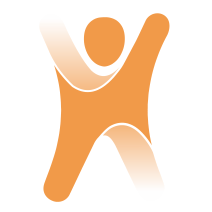
Experienced, evidenced-based care
Treatment is led by Anthony Sheridan, BSc Physio, MAPA, an AHPRA registered physiotherapist with more than 15 years of practice in Ireland, the UK and Australia.

Personalised care without rush
Your appointment is uninterrupted so there is time to talk, assess carefully and begin treatment in the same visit.

Broad musculoskeletal care
Support for back, neck and shoulder pain, sports injuries, tendinopathy, arthritis, post operative rehabilitation and balance concerns.

Simple claiming and funding
HICAPS for private health rebates in clinic, cards accepted for any gap, and funded care available for ReturnToWorkSA, DVA, MVA and NDIS with approved claims.

A clear home program you can follow
You leave with a simple step by step program, usually 1 to 3 exercises, plus clear advice on what to do between sessions.
Payment options
Fees and rebates
Standard fees
Private health extras
Funded care
Referral
Learn more about physiotherapy
Many people like to understand how physiotherapy works before they book. Read the essentials on training and registration, common problems, first visits and treatments.
Book your appointment
If pain, stiffness or injury is affecting your work, sport or daily life, Aldinga Bay Physio is ready to help. You’ll receive one-on-one care from an experienced physiotherapist with practical plans to restore movement and confidence.
Book your appointment online or call 0493 818 673 to speak to your local Aldinga physio today.
